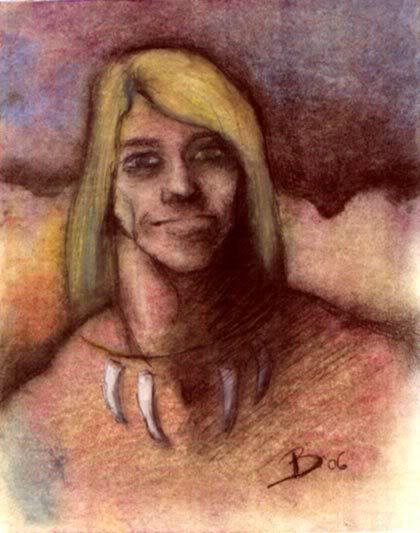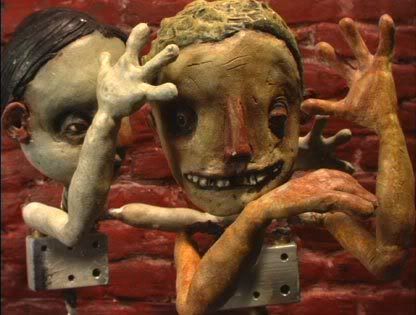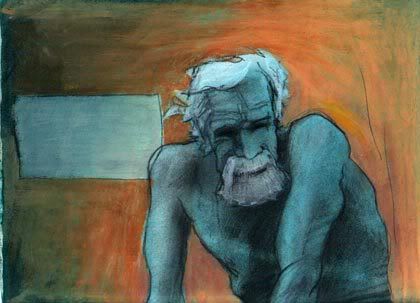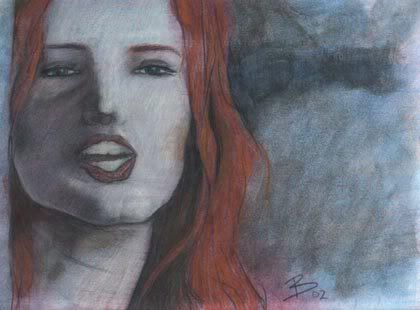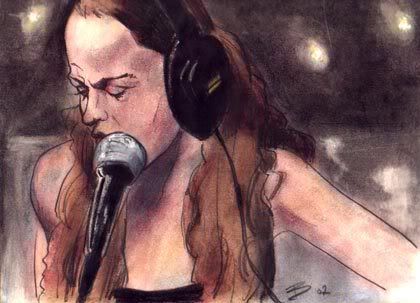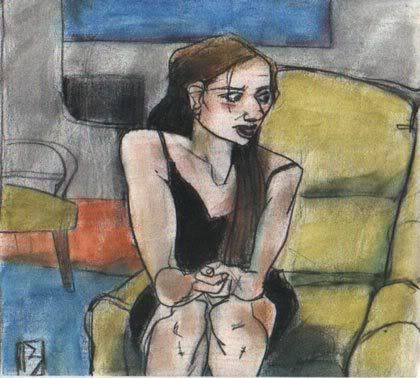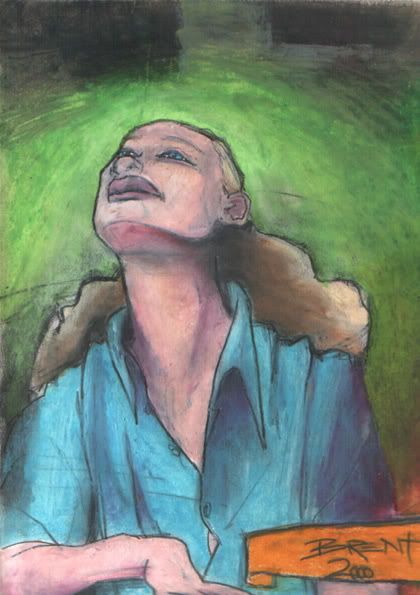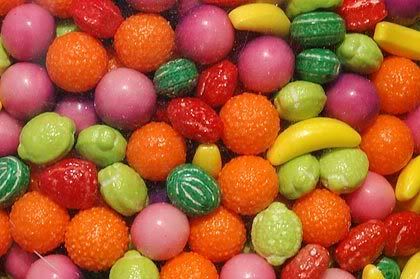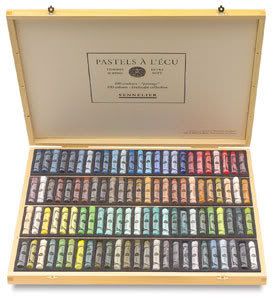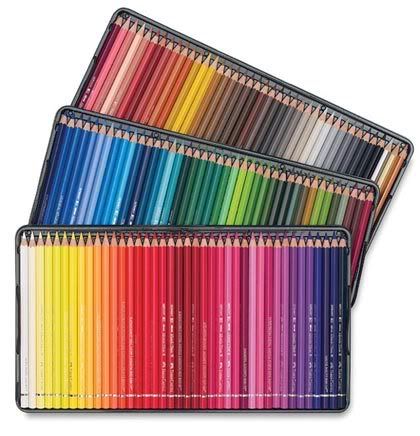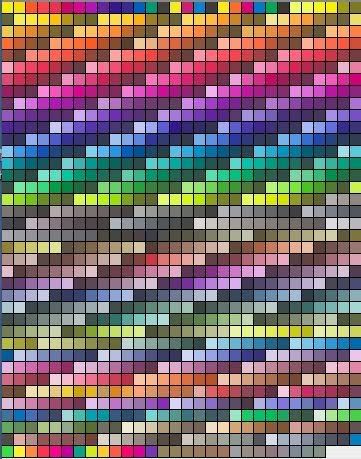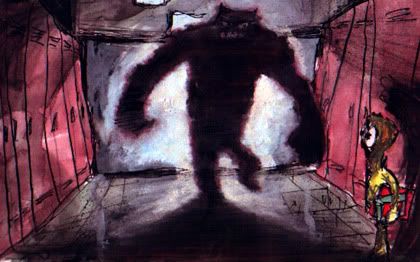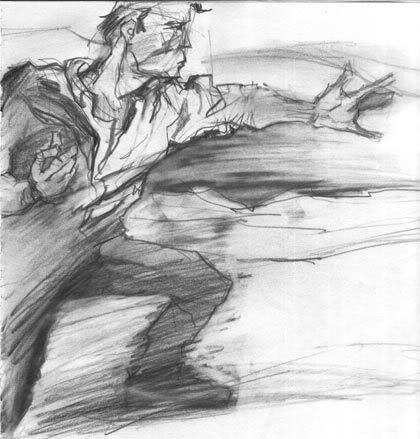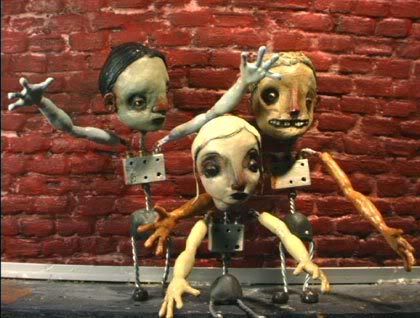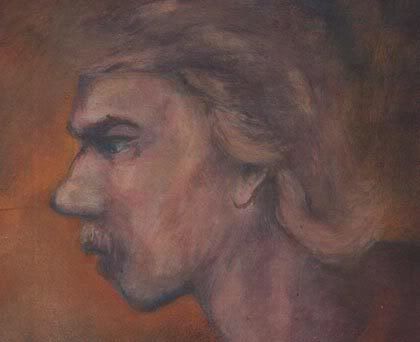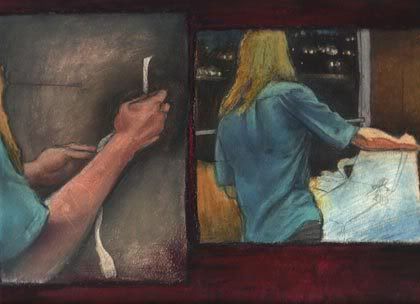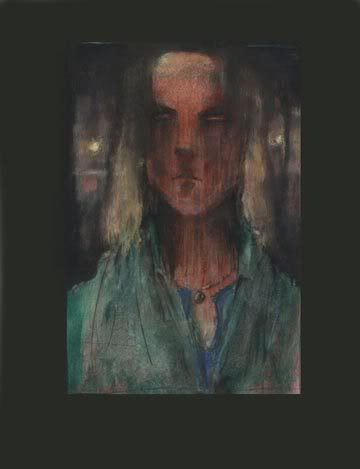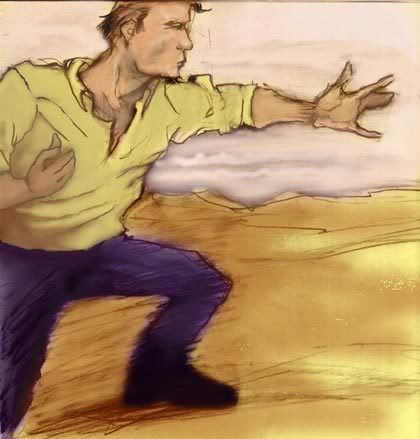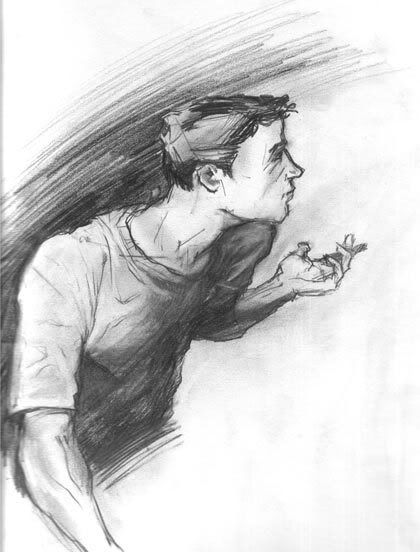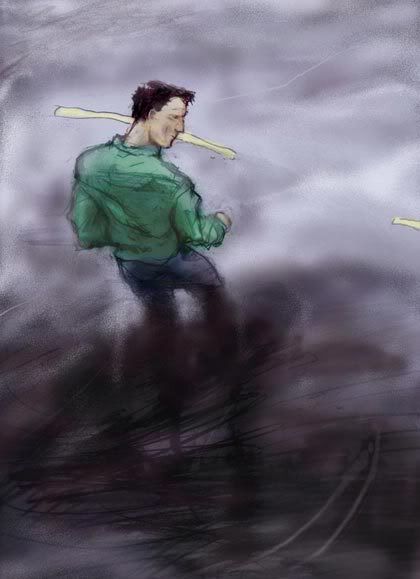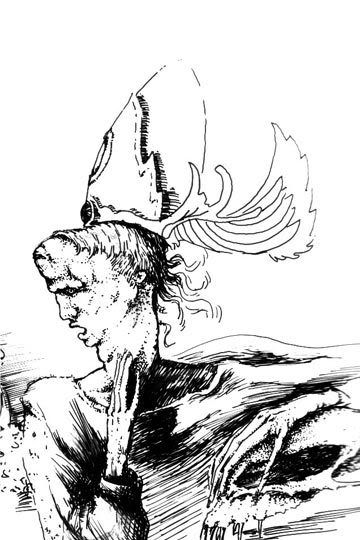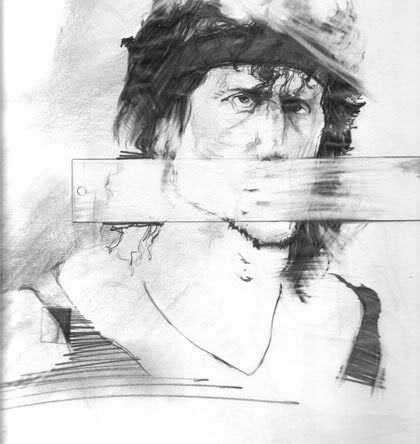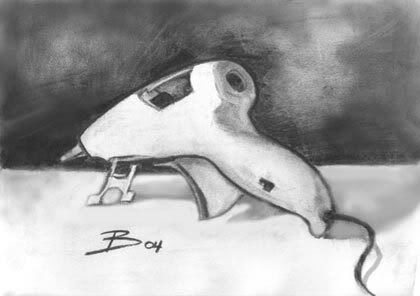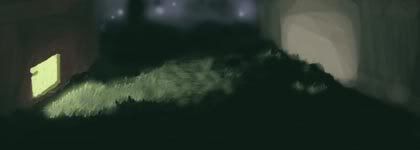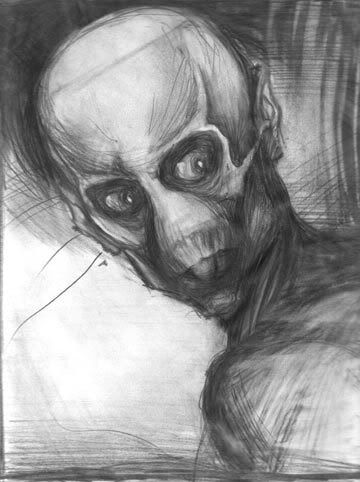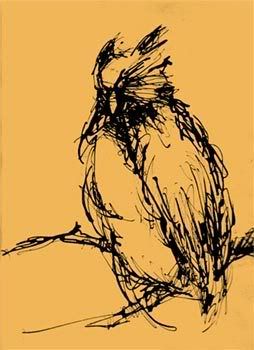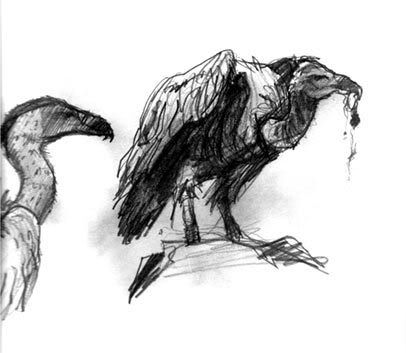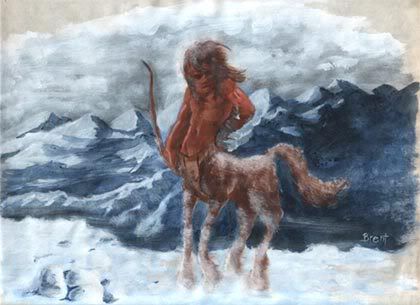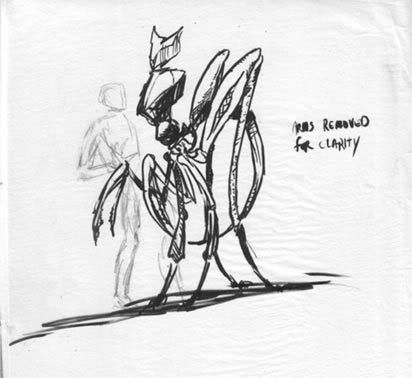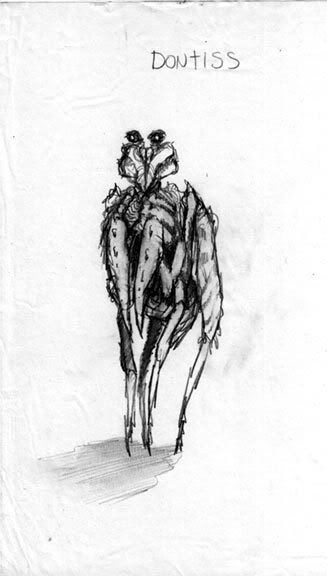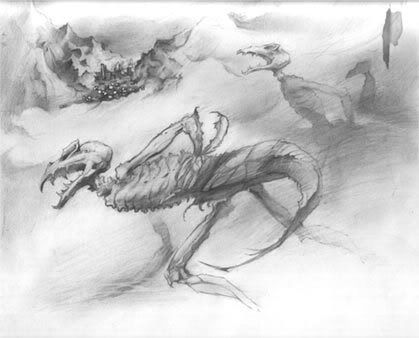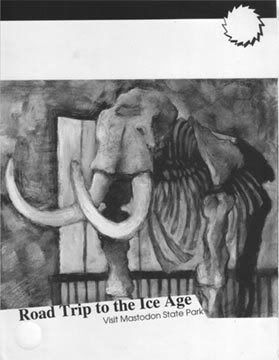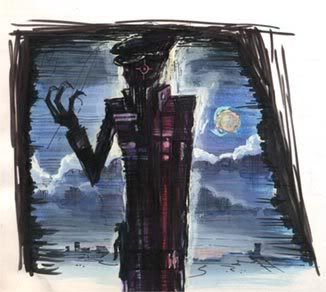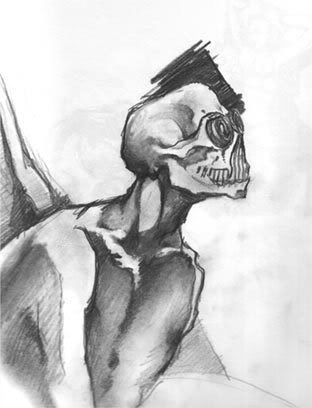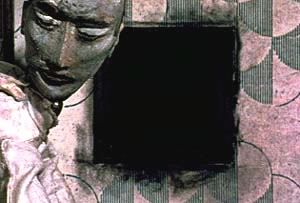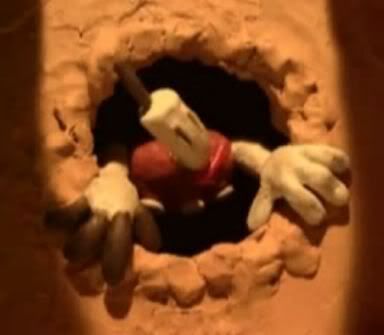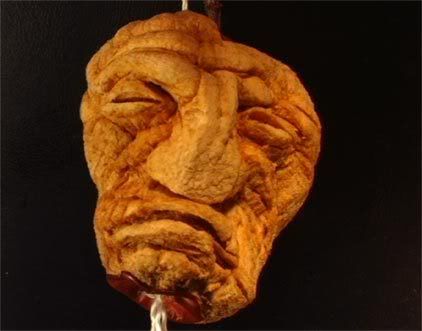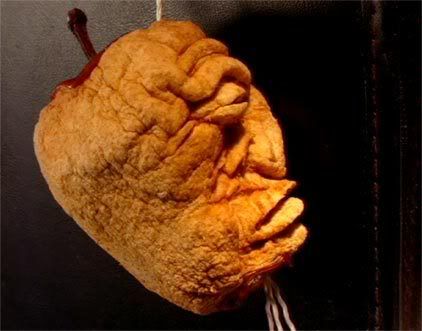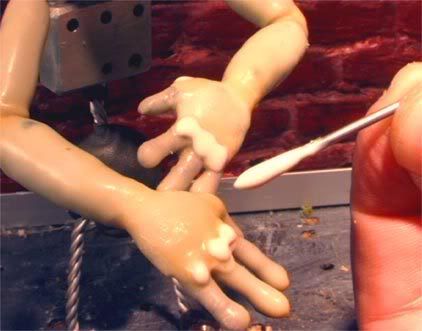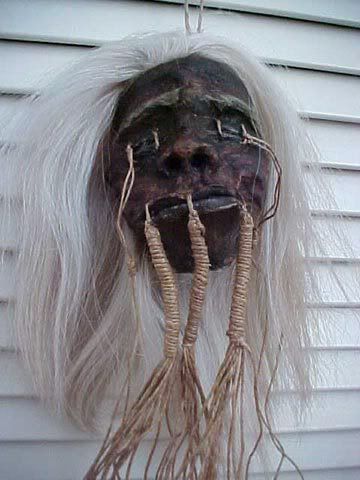While I'm on this whole art kick I want to jot down a few of the important ideas that have helped me along the way, partly just to remind myself of them, and in case it can help anyone else. Posting all this stuff (and digging through all my old art) has made me want to get back to it again, and also I've been able to look at it all with a fresh eye and see the weak points that I couldn't see before. So I'll start with a quick critique of the stuff I posted recently and what I think I need to work on.
My main focus has always been on figure drawing. Obviously, from the first batch of drawings I posted, I wanted to draw comics at one time. Some of my greatest influences/inspirations are comic book and graphic novel artists, far too numerous to mention here. But it wasn't just American superhero type comics.... in fact my favorites were always the Warren magazines... large format black-and-white horror comics that came out in the '70's featuring mostly European artists (yeah, even then I was Euro-centric... weird huh?). Eerie, Creepy, Vampirella, The Spirit... these were fantastic!!! So much more expressive than most of the superhero stuff, and more realistic, and at the same time expressively drawn. But anyway, I can feel myself wandering away from my subject.
Ok, Critique of my recently-posted stuff:
The ones I like the best are the ones that feature either multiple characters interacting or a figure in a definite environment (where the environment is more than just a few lines in the background). And I think it's for the reason McG (Uhhh.... that's Michael Granberry) mentioned recently - because there's drama in it. There's no drama in a single character floating in space or in a mist-filled room. I also like the ones where I resisted the temptation to scribble a lot of
artsy lines everywhere. Or at least keep them subordinated to the effect of the piece, and not let them destroy anatomy or solidity. And finally, I like the ones that are just tighter than the rest... I tend to draw too loose sometimes, not enough detail and not enough anatomy and proportioning. For many years my goal was to loosen up, and I did that, but now I feel it's time to tighten up again, hopefully with a new perspective I've learned along the way.
On to those tidbits and morsels of random info that have helped me in my artistic journey:
The
singleshadow. My own word for a well-known concept that I learned from the invaluable Robert Beverly Hale books, the finest and most advanced drawing/anatomy books I've ever laid eyes on (and I've seen quite a few, believe me!). The idea is that all the shadows on a figure should be part of one big shadow... all serving to define the major forms. If they get scattered all over the place and no longer describe the larger form, then things are just getting confused. Helped me loads. In fact, the more I learn about advanced figure drawing, I find that learning to define those major forms is the most important step. If you can do that well enough, you've got a good drawing/painting.
The
trusting line. Again, my name, and a concept that I assume is well known, though I haven't really heard of it anywhere, though a lot of artists use it or a variation of it. If you look at the last Fiona Apple drawing I posted, the one where she's singing into the mic with headphones on..... this is a good example of it. Basically you place your pencil (or whatever drawing implement you're using) and look at your reference, trying to fix the next series of curves and landmarks in your mind in relation to the entire page, and then you start the line. You keep going, confident and strong, until you've reached the logical stopping point. It's very hard to do, and you really do have to just trust that it will work, though sometimes it won't. It depends on your knowledge of anatomy and of how to draw from reference, be it from life or photoref. It helps to understand certain principles, like finding the center point of your image and the center point of the ref (easy on photoref, just place your figure exactly like the one in the pic) or just visually breaking the image area up into quarters to see what parts of the figure fall in each quarter. And sometimes, for tricky parts, you need to rely on old artist's tricks like visually aligning some part with another.... that elbow is directly under the nose etc.You really need to do these things in your mind before starting each line, and sort of visualise the line on the page before drawing it. It's easy to end up with a distorted figure this way - in fact it's hard not to, bu it usually looks cool. The trusting line is not the same as a contour drawing, where you don't look at your paper and never lift the pencil and never stop until the whole drawing is done. That's more of a 'learning to see differently' exercise, though it can produce some nice (if not realistic) drawings. This is more about boldly carving out the parts of your drawing with a strong single line, something Egon Schiele and Gustave Klimt did extremely well. My drawing used to be all fuzzy with re-drawn lines until I tried this. A key to drawing this way came to me again from Hale, when he said that the master artists of history started by learning the skeleton and all its
bony landmarks (because bony landmarks don't float around the way a nipple or a belly button - fleshy landmarks - can). Then they would simply run a line, appropriately curved, from one bony landmark to the next.
Silouhette. This kind of covers a few ideas all rolled into one. My Paintings used to look like crap until I realized that an entire figure should be either light or dark. Or, in the case of someone maybe wearing a light shirt and dark pants, use contrast to make the figure stand out from the background. Your shading shouldn't make parts of the figure so dark it becomes unreadable against the background. Another factor of silouhette is that each character should "read" in silouhette, for instance if it's seen from far away as just a dark shape against a light background, you should be able to tell who it is. In a situation like this it helps to turn the face in profile (something I tend to do even close up). And here's a factor that combines both silouhette and the trusting line..... I sometimes try to simplify things so much that with just that one line I'm describing the silouhette
and conveying information about anatomy and clothing. Kind of hard to describe... this is something I get from Schiele and Klimt, through Kent Williams. I'll try to find an example and post it. When i can do this, I feel like I'm drawing at the upper limit of my abilities.
**EDIT**
I decided to upload this pic of a drawing I did some years ago as a demonstration of how a line can describe anatomy and do something else at the same time. In looking, it seems I actually came back in and drew the hair (along forearms etc) later, but I
could have done it with the trusting line as I was drawing it. In fact, studying Schiele convinced me that details can be concentrated along the line itself, since line denotes a plane change, and that's where you'll tend to see details best. It's also where color and shadow change. Worthy of lots of contemplation/study, no? (I mean the tecnique, not my drawing)
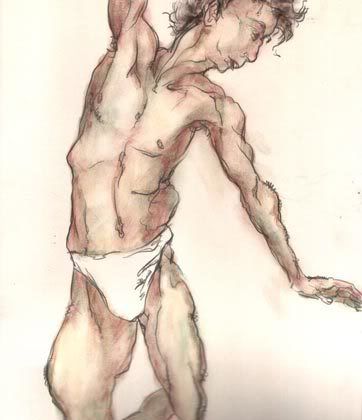
to see the kind of drawings I was trying to emulate, check out
KentWilliams.com and to see what inspired HIM look at some
Egon Schiele drawings.
That's all I got for now.... if I think of more later I'll post more. Jeff, you said you were thinking of learning some Photoshop technique.
HERE'S a nice place to start. For coloring stuff, one of the coolest things I ever learned was how to creat a
flats channel or layer. And, for anyone interested in learning about ar or improving your skills, or just seeing a whole lot of incredible stuff, check out
Conceptart.org.
C-ya!
